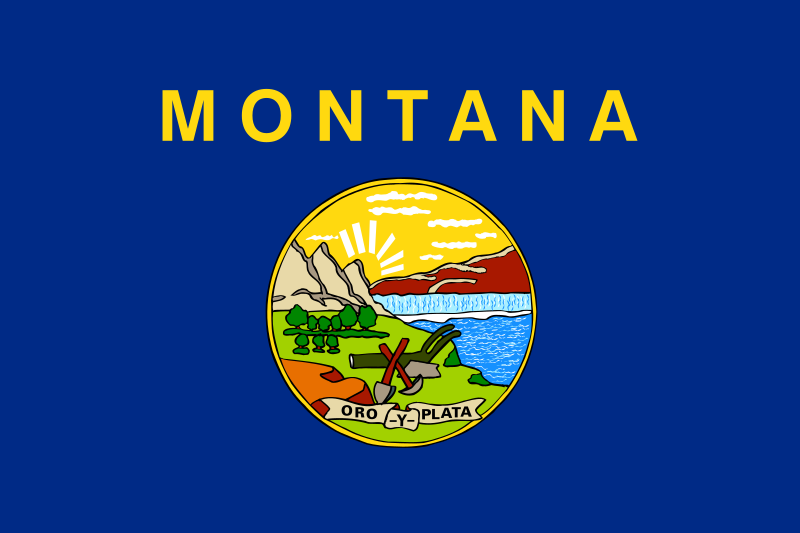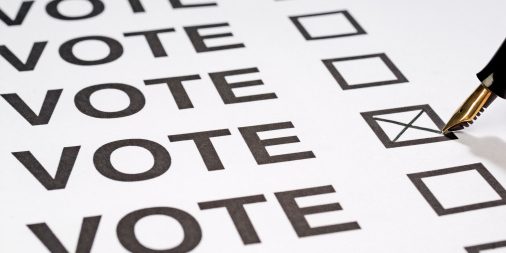Tag: montana
-
Montana is sixth state this year to adopt a ban on foreign spending on ballot measures

Gov. Greg Gianforte (R) signed House Bill 818 on May 13, making Montana the sixth state in 2025 to adopt a ban on foreign spending in ballot measure campaigns. Montana joins five other states that adopted bans this year—Arkansas, Indiana, Kansas, Kentucky, and Wyoming—and ten states that passed similar laws in prior years, bringing the…
-
Montana passes legislative oversight bills

The Montana legislature passed two bills which would modify the rulemaking process for state administrative agencies. Both were supported by bipartisan majorities. House Bill 126 was passed by a vote of 100-0 in the House on January 29, 2025; the Senate voted 48-0 on April 9, 2025. Gov. Greg Gianforte (R) signed it on May…
-
Montana Gov. Gianforte (R) signs bill banning the use of extreme risk protection orders

On May 8, Gov. Greg Gianforte (R) signed HB 809 into law, banning local governments in the state from enacting or enforcing extreme risk protection orders (ERPOs). The Republican-sponsored bill passed the legislature largely along party lines, but two Republicans in both the Montana House of Representatives and Montana Senate voted against the bill. With…
-
45% of elections in Montana are uncontested

Of 338 regular elections in Montana—153 (45%) are uncontested. An uncontested election is one where the number of candidates on the ballot is less than or equal to the number of seats up for election. Of the 26 states where Ballotpedia is covering every election on Nov. 5, Montana has the 20th highest rate of…
-
Three of five seats on the Montana Public Service Commission are up for election in 2024
Six candidates are running for three of five seats on the Montana Public Service Commission on Nov. 5, 2024. Districts 2 and 3 are open. An incumbent is running in District 4. The Daily Montanan’s Keila Szpaller wrote, “The PSC has been in the public eye recently because commissioners have approved significant rate hikes requested by both NorthWestern and Montana-Dakota Utilities.” Opposition to the rate increase…
-
Four candidates are running for the Montana Supreme Court—two for chief justice, two for associate justice

Montana is holding an election for two Montana Supreme Court justices—one for chief justice and one associate justice seat. Chief Justice Mike McGrath and Justice Dirk M. Sandefur are retiring at the end of their terms. The Supreme Court clerk, a partisan position, is also up for election. Incumbent Bowen Greenwood (R) is running for…
-
Incumbent Ryan Zinke (R), Monica Tranel (D), and Dennis Hayes (L) are running in the general election for Montana’s 1st Congressional District

Incumbent Ryan Zinke (R), Monica Tranel (D), and Dennis Hayes (L) are running in the general election for Montana’s 1st Congressional District on November 5, 2024. This is a rematch of the 2022 election. Zinke was first elected in 2022, defeating Tranel 49.6% to 46.5%. Montana’s 1st Congressional District was created after the 2020 redistricting…
-
Voters in Montana to decide on two electoral system ballot measures in Nov. 2024

The Montana Secretary of State’s office certified two initiatives, Initiative CI-126 and Initiative CI-127, for the November ballot on Aug. 22. The two initiatives will appear on the ballot along with Initiative CI-128, which would create a state constitutional right to abortion. Montanans for Election Reform submitted signatures for the initiatives in June. The committee…
-
With a right-to-abortion initiative in Montana, 9 states will vote on abortion-related ballot measures in Nov.—the most for a single year

Nine statewide ballot measures related to abortion have been certified in Arizona, Colorado, Florida, Maryland, Missouri, Montana, New York, Nevada, and South Dakota for the general election ballot in 2024. This is the most on record for a single year. Montana is the most recent state to add an abortion measure to the ballot. The…
-
With certifications in Arizona and Missouri, voters in eight states will decide on abortion-related ballot measures in 2024, the most on record for a single year

Voters in eight states—Arizona, Colorado, Florida, Maryland, Missouri, New York, Nevada, and South Dakota—will decide on abortion-related ballot measures in Nov. 2024. This is the most on record for a single year. Initiatives are pending signature verification in three additional states—Arkansas, Montana, and Nebraska. Measures were most recently certified in Arizona and Missouri. On Aug.…

